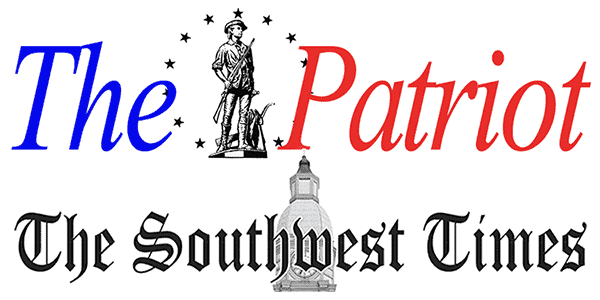The 1976 Bikecentenial and Pulaski County
 By TOM EWING
By TOM EWING
Professor of History,
Virginia Tech (etewing@vt.edu)
Project Director:
Bike 76 VA
(https://bike76-va.vt.domains/home/)
Almost fifty years ago, cyclists participating in the Bikecentennial rode through Virginia, including a twenty-mile section in Pulaski County. The route established in 1976, which is still marked as US Bicycle Route 76, enters Pulaski County from the east along the New River on Hazel Hollow Road. The route runs parallel to Interstate 81 for several miles, runs under the highway to enter Newbern Historic District, crosses the New River Trail on Old Route 100, goes directly through Draper near the access point for the New River Trail, and enters Wythe County after crossing the highway once again.
Pulaski County welcomes cyclists at both entry points: along Hazel Hollow Road in the east and on Frontage Road F-044 in the west. Both signs declare “Welcome Cyclists: Pulaski County VA welcomes TransAmerican & USBR76 Cyclists,” and provides phone numbers and a website for additional information. Route 76 passes through nearly thirty counties and cities, and Pulaski is one of very few with a welcoming sign for cyclists.
Route 76 is deeply connected to both the natural environment and the historical development of Pulaski County. The roads used to map the Bikecentennial generally follow established trails used by Indigenous Americans for hunting, migration, and trade. When Europeans began expanding from the Jamestown colony, Indigenous Americans migrated further towards the Appalachian mountains to avoid conflicts with explorers, surveyors, and speculators. By the time of the American Revolution, settlers were following the Wilderness Road, where they transformed the land by establishing towns, farms, churches, and small manufacturing enterprises. In the nineteenth century, the roadway now designated as Route 11 followed the same general route. Fifty years ago, at the time of the Bicentennial, Interstate 81 produced yet further changes in the land and communities as travellers moved through the region in greater volume and at higher speeds.
Route 76 also intersects with the railways that have shaped the history of Pulaski County. As cyclists ride along the New River in Radford, they pass under the railway bridge that carries trains across the river. The New River Trail, which follows the abandoned railway line, crosses Route 76 south of Pulaski and northeast of Draper. Cyclists on Route 76 ride parallel to the New River Trail for several miles, with access points allowing cyclists to enjoy a protected bicycle trail if they are willing to take a detour. In this way, cyclists experience the transformation in transportation infrastructure as abandoned railway lines have become trails for walking and cycling which bring recreational tourists into the region.
The Pulaski county section of Route 76 is distinctive because cyclists pass directly through the Newbern Historic District which illustrates these historical connections in ways that introduce cyclists to the history of this county. The community was established in 1809 with nearly thirty homes along the Wilderness Road. Newbern became the county seat in 1837, with a courthouse that served the county for decades. One historical marker indicates the location of the original courthouse while another identifies the first presiding judge. Nearby, another historical marker commemorates the creation in 1870 of the Newbern Water Works, an important step in municipal development and public health. The Wilderness Road Museum provides more details about the historic homes as well as broader themes related to the development of transportation, farming, and religion along the route.
Fifty years ago, thousands of cyclists rode across Virginia as part of the Bikecentennial. The July 13, 1976 issue of the Southwest Times included an interview by reporter Connie Brockenbrough with three cyclists who reached southwest Virginia after almost two months of riding across the United States. Steven Sweedler of Horsham, Pennsylvania, Dick Baird of Clemson, South Carolina, and Jed Collery of Valley Forge, Pennsylvania, left Oregon on May 25 and expected to finish their trip in Yorktown within a few days. After pedaling more than four thousand miles, they declared that the “friendliest people” have been in Kentucky and Virginia, declaring: “In Virginia, we’ve gotten some of the things we like most: a shower and two meals, including a big breakfast.” The three rode about eighty miles a day, and, unlike most riders on the Bikecentennial, often diverted from the set route because “people are friendlier if we stay off the trail, then they haven’t seen so many bikers.” Their final statement sums up their experiences as well as those of cyclists more generally: “biking is the best way to see the country and the finest way to travel.”
These observations from cyclists almost fifty years ago confirm the final message on the signs welcoming cyclists as they enter the region: “We hope you enjoy Pulaski County as much as we do.”

October 20, 2025 @ 7:52 am
Thanks for this background info! I will be rolling thru Pulaski Co next June ‘26 on the TransAm. Our 30 riders will be raising funds and awareness with Bike the US for MS (BTUSFMS) as we also celebrate its 50th anniversary. GSBUCKEYE